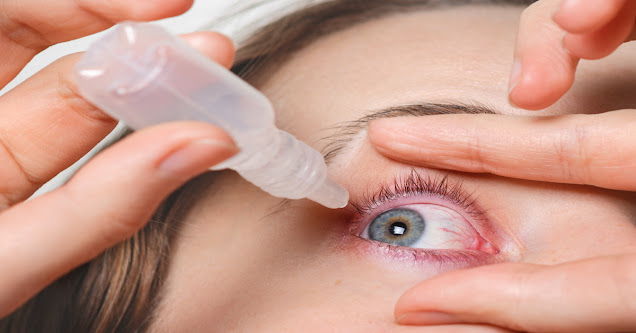The vast majority of people over 60 years of age complain of impaired eyesight. Older people struggle to a greater or lesser extent with the symptoms of at least one of the fatal list of eye diseases. It is worth asking the question - why does eyesight deteriorate with age? It is mainly influenced by genetic and physiological factors. If someone in your family has glaucoma, you are at increased risk of glaucoma. On the other hand, visual deterioration is associated with the aging process. It happens that for this reason people decide not to take any form of treatment, guided by the thought that this is the way things are.
In turn, young people do not pay attention to the harmful factors they expose their eyes to. They do not care that after reaching maturity it is often felt that which is neglected in times of youth. Therefore, you should take care of your eyesight throughout your life. If there are problems, regardless of age, you should go to an eye specialist, which can protect you from serious complications. It is worth remembering that even the most common diseases can lead to blindness.
Presbyopia
Presbyopia, also known as presbyopia, is a problem with seeing at close range. It is due to the loss of elasticity of the lens of our eyes. The process takes place throughout life, but usually begins in your forties. The most characteristic symptom of presbyopia is the need to move the text apart to make it easier to read.
Unfortunately, presbyopia cannot be completely stopped. However, you can reduce and delay its symptoms by reducing - if possible - the number of factors that adversely affect the flexibility of the lens. These factors include antidepressants, antihistamines, and alcohol. Long-term exposure to light from computers and telephones can also accelerate the progression of presbyopia.
Cataracts
The most common type of cataract is senile cataracts. It usually appears after the age of 50. The characteristic symptoms include a blurry image, disturbances in the assessment of distance, a change in the color of the pupil from black to gray-white. The same as in the case of presbyopia - we have no influence on its formation. We can only reduce the risk of cataracts by following an appropriate diet, e.g. by ensuring a high level of vitamin C in the body, drinking green tea, limiting carbohydrates and, above all, excluding smoking.
But what if the cataract begins to progress and hinder our daily functioning? In this case, cataract surgery should be considered. (Cataract - where to operate?) Cataract surgery abroad consists in removing the cloudy lens and replacing it with a new one, selected depending on the patient's preferences. Currently, it is the only effective treatment for cataracts.
Glaucoma
Glaucoma is a disease that causes damage to the optic nerve, usually caused by too much pressure in the eye. The number of patients with glaucoma increases with age, and people particularly at risk of developing this disease include, among others, diabetes, people genetically burdened, exposed to stress, struggling with pressure problems and migraineurs. Characteristic of glaucoma is seeing halos around light sources, redness and pain in the eye, and a narrowing of the field of vision (tunnel vision). The greatest danger of glaucoma is, paradoxically, the lack of symptoms. It is typical of this disease to develop symptoms in the late stages. Therefore, the best protection against glaucoma is regular eye examinations.
Macular Degeneration (AMD)
Macular degeneration is directly related to age. This is indicated by the English extension of the acronym - AMD, or age-related macular degeneration. Later in life, the physiological processes in the cells of the optic nerve are disturbed. Macular damage causes straight vision, sharp images, and color recognition to fail. It is a highly dangerous eye disease, as it is the eye disease that most often leads to irreversible blindness.
The risk of developing AMD is most likely among people with a family history of the disease, people with hypertension, diabetes, obese people and smokers.
So far, there is no method that can effectively treat AMD. However, when the disease is diagnosed early, it is possible to inhibit its development. As with any disease, the best factor in preventing macular degeneration is prevention and frequent testing.

Comments
Post a Comment